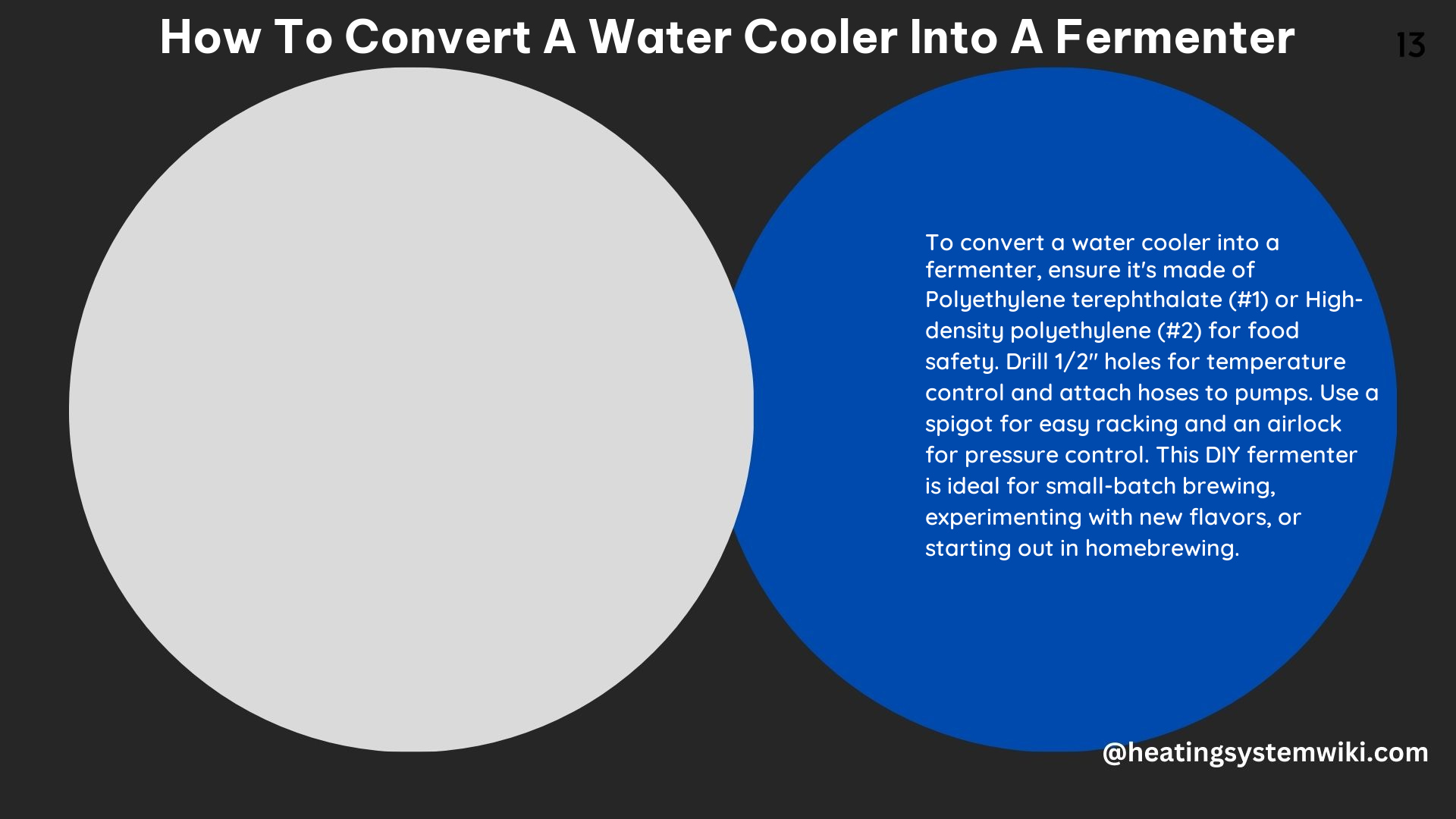Converting a water cooler into a functional fermenter is a cost-effective and straightforward DIY project for homebrewers. By following a few simple steps, you can transform an inexpensive water cooler into a reliable vessel for your fermentation needs. This detailed guide will walk you through the process, ensuring your converted water cooler can maintain the necessary conditions for successful brewing.
Selecting the Appropriate Water Cooler
The first step in converting a water cooler into a fermenter is to choose the right type of cooler. It’s essential to select a food-grade plastic water cooler made of Polyethylene terephthalate (PET or #1) or High-density polyethylene (HDPE or #2) plastic. These materials are safe for fermentation and will not leach harmful chemicals, such as Bisphenol A (BPA), which can be found in polycarbonate (#7) coolers.
When selecting the water cooler, consider the size that best suits your brewing needs. Typical water coolers range from 2 to 5 gallons in volume, providing ample space for small-batch fermentation. Larger coolers may be more challenging to manage, so it’s generally recommended to opt for a 2 to 5-gallon model.
Cleaning and Preparing the Cooler

Before converting the water cooler into a fermenter, it’s crucial to thoroughly clean and sanitize the interior. Use a food-grade sanitizer, such as a solution of sodium percarbonate or Star San, to remove any residual chemicals or bacteria that may be present. Rinse the cooler thoroughly with clean water to ensure no sanitizer residue remains.
Creating an Airlock System
To allow for proper gas exchange during fermentation, you’ll need to create an airlock system. Start by drilling a 1/2-inch hole in the center of the cooler’s lid, aligning it with a thin portion of the lid. Attach a 1/2-inch rubber grommet to the hole, ensuring a snug fit. Then, insert an airlock into the grommet, creating a seal that will allow carbon dioxide to escape while preventing oxygen from entering the fermenter.
Installing a Spigot (Optional)
While not strictly necessary, adding a spigot to the water cooler can make racking the finished beer or mead much easier. Drill a hole in the cooler’s body, below the airlock hole, and install a spigot using a rubber grommet. This will allow you to easily transfer the fermented liquid from the cooler without disturbing the sediment.
Marking Liquid Levels
To monitor the fermentation process and ensure you have enough headspace, use a permanent marker to mark the liquid levels on the outside of the cooler. This will help you track the progress of your brew and make adjustments as needed.
Temperature Control
Maintaining the correct fermentation temperature is crucial for the success of your brew. Depending on the environment, you may need to place the converted water cooler fermenter in a temperature-controlled chamber or a cooler with a temperature controller. This will help you maintain the optimal temperature range for your specific yeast strain and style of beer or mead.
Technical Specifications
- Material: Polyethylene terephthalate (PET or #1) or High-density polyethylene (HDPE or #2) plastic
- Volume: Typically 2 to 5 gallons, depending on the water cooler size
- Airlock: 1/2-inch rubber grommet with an airlock
- Spigot: Optional, for easier racking of the fermented liquid
- Temperature Control: Dependent on the environment, a temperature-controlled chamber or cooler may be necessary
DIY Perspective
Converting a water cooler into a fermenter is an excellent DIY project for homebrewers on a budget or those looking to experiment with small-batch brewing. With a few basic tools, such as a drill, drill bits, and a permanent marker, you can transform an inexpensive water cooler into a functional and reliable fermenter. This project allows you to customize your fermentation setup to your specific needs and brewing style, while also saving you money compared to purchasing a dedicated fermentation vessel.
